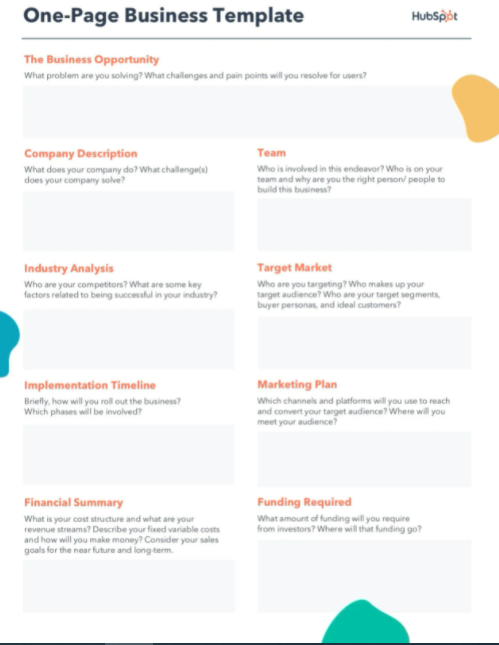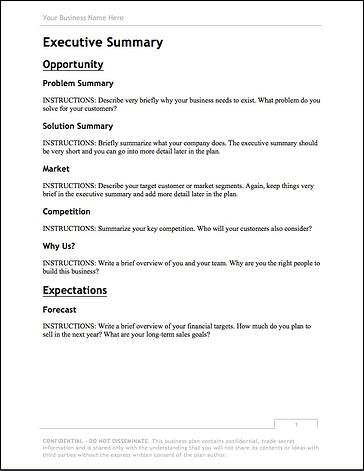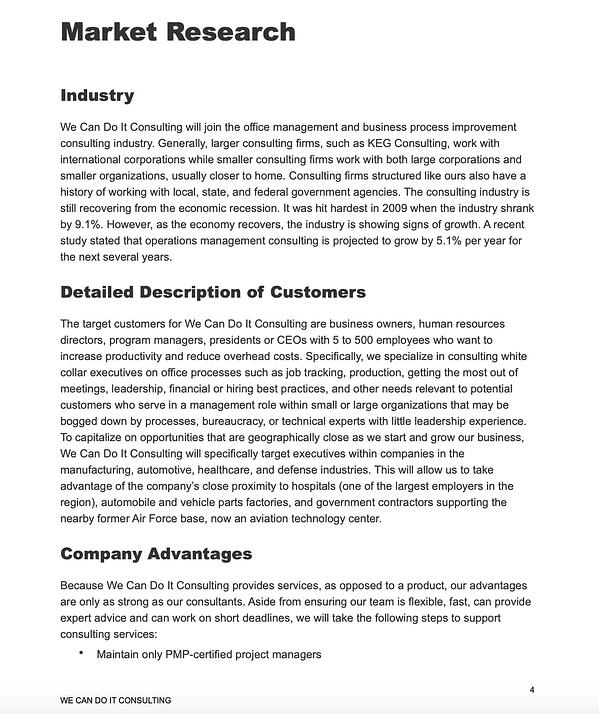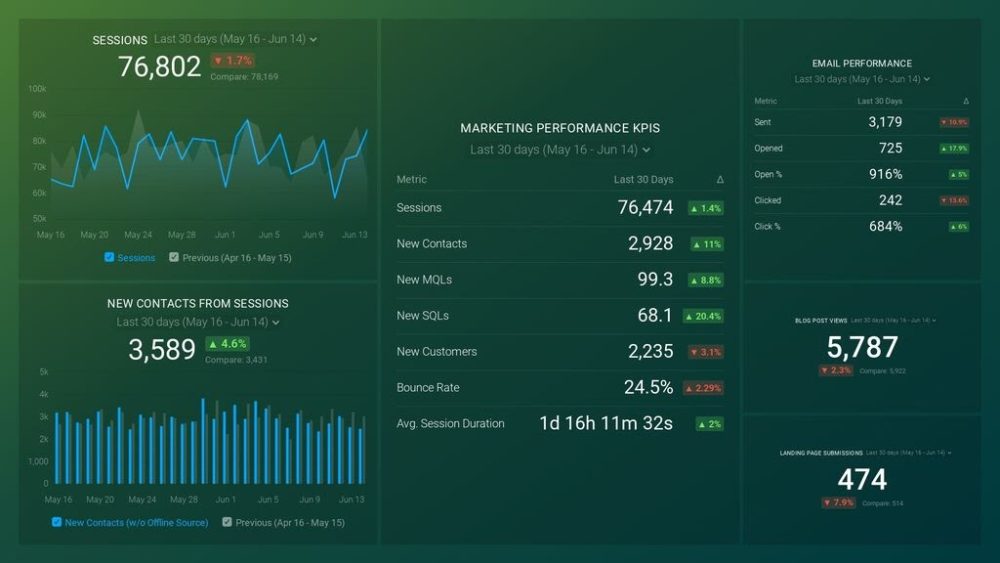Table of contents
So you have come up with a business idea that will turn your company into a Fortune 500 enterprise? Sounds great!
However, you are going to need much more than an idea. You will need to do some comprehensive research, create operational standpoints, describe your product, define your goals, and pave out a road map for future growth.
In other words, you are going to need a business plan.
A business plan is a document that precisely explains how you are going to make your startup a success. Without it, your chances of attracting funding and investments significantly decrease.
Do you want to learn how to create a winning business plan that will take your company to the next level? We created a guide that will help you do just that.
Let’s dive in.
- What Is a Business Plan?
- Why and When Do You Need a Business Plan?
- Types of Business Plans (What to Include in Each)
- How Do You Write a Business Plan?
- Best Practices for Writing a Winning Business Plan
- Business Plan Examples
- Monitor the Performance of Your Business with Databox
What Is a Business Plan?
A business plan is a comprehensive document that defines how a business will achieve its goals. It is essentially a road map for growth that includes operational standpoints from all the key departments such as marketing, financial, HR, and others.
Startups use business plans to describe who they are, what they plan to do, and how they plan to achieve it. This is an extremely valuable document for attracting investors.
However, they are valuable for the company members as well. A good business plan keeps executive teams on the same page regarding the strategies they should implement to achieve their set objectives.
Related: Reporting to Investors: 6 Best Practices to Help Increase Funding
While business plans are especially useful for startups, each business should include them. In the best-case scenario, this plan will be updated from time to time and reviewed whether the goals of the company have been met.
The main things that investors want to check out in the business plan are:
- Product-market fit – Have you researched the market demand for your products and services?
- Team efficiency – Does your startup have devoted professionals that will work on achieving your goals?
- Scalability – How probable is growth in sales volumes without proportional growth or fixed costs?
An organized business plan is essentially a blueprint of your goals and it showcases your abilities as an entrepreneur.
Related: Business Report: What is it & How to Write a Great One? (With Examples)
Why and When Do You Need a Business Plan?
If you want to persuade venture capitalists and banking institutions to invest in your startup, you won’t be able to do it without a solid business plan. Following a clear business plan format is crucial, as it structures your plan in a way that is easily understandable and demonstrates your business’s potential.
A business plan is helpful in two ways – it allows you to focus on the specific goals you set for the future and it provides external parties with evidence that you have done your research in advance.
But don’t just take our word for it – here are some of the things that researchers from Bplans found out when they were analyzing the benefits of business plans with the University of Oregon.
- Companies that use business plans have recorded a 30% faster growth compared to those that didn’t use them.
- Getting investments and loans is twice as likely to happen with the help of business plans.
- There is a 129% increased chance for entrepreneurs to go past the ‘startup’ phase through business plans.
You should create a business plan before you decide to quit your regular job. It can help you realize whether you are ready or not.
Also, creating a business plan is helpful when:
- You want to attract investments or funding from external parties
- You want to find a new partner or co-founder
- You want to attract talented professionals to join your startup
- You need to change things up due to the slow growth
Types of Business Plans (What to Include in Each)
While creating a business plan is an important step, you first have to know how to differentiate all the different types. This will help you choose the one that is most suitable for your business.
Here are the most common types of business plans and what you should include in each.
- One-Pager Business Plan
- Startup Business Plan
- Internal Business Plan
- Strategic Business Plan
- Feasibility Business Plan
One-Pager Business Plan
The one-pager is a business plan that only includes the most important aspects of your business. It is essentially a simplified version of a traditional business plan.
When creating the one-pager business plan, your primary focus should be on making it easily understandable.
Since this business plan is rather short, you should avoid using lengthy paragraphs. Each section should be around 1-2 sentences long.
The things you should include in a one-pager business plan are:
- The problem – Describe a certain problem your customers have and support the claim with relevant data.
- The solution – How your products/services can solve the issue.
- Business model – Your plan on how to make money. Include production costs, selling costs, and the price of the product.
- Target market – Describe your ideal customer persona. Start with a broad audience and narrow it down by using TAM, SAM, and SOM models. This lets investors in on your thought process. To understand these models better, check out, for example, the importance of proper TAM evaluation for B2B startups.
- Competitive advantage – How are you different from your competitors?
- Management team – Include your business’s management structure.
- Financial summary – This part should revolve around the most significant financial metrics (profit, loss, cash flow, balance sheet, and sales forecast).
- Required funding – Define how much money you need to make your project a success.
PRO TIP: How Well Are Your Marketing KPIs Performing?
Like most marketers and marketing managers, you want to know how well your efforts are translating into results each month. How much traffic and new contact conversions do you get? How many new contacts do you get from organic sessions? How are your email campaigns performing? How well are your landing pages converting? You might have to scramble to put all of this together in a single report, but now you can have it all at your fingertips in a single Databox dashboard.
Our Marketing Overview Dashboard includes data from Google Analytics 4 and HubSpot Marketing with key performance metrics like:
- Sessions. The number of sessions can tell you how many times people are returning to your website. Obviously, the higher the better.
- New Contacts from Sessions. How well is your campaign driving new contacts and customers?
- Marketing Performance KPIs. Tracking the number of MQLs, SQLs, New Contacts and similar will help you identify how your marketing efforts contribute to sales.
- Email Performance. Measure the success of your email campaigns from HubSpot. Keep an eye on your most important email marketing metrics such as number of sent emails, number of opened emails, open rate, email click-through rate, and more.
- Blog Posts and Landing Pages. How many people have viewed your blog recently? How well are your landing pages performing?
Now you can benefit from the experience of our Google Analytics and HubSpot Marketing experts through a plug-and-play Databox template. It includes key metrics for tracking your leads and can be used as a standalone dashboard or as part of your marketing reports. You can try it during your free trial no setup headaches.
You can easily set it up in just a few clicks – no coding required.
To set up the dashboard, follow these 3 simple steps:
Step 1: Get the template
Step 2: Connect your HubSpot and Google Analytics 4 accounts with Databox.
Step 3: Watch your dashboard populate in seconds.
Related: Check out our comprehensive guide on writing a marketing plan report.
Startup Business Plan
New businesses use startup business plans to outline their launching ideas and strategies to attract funding and investment opportunities. When creating startup business plans, you should primarily focus on the financial aspect and provide evidence that supports it (e.g. market research).
These are some of the main things that should be included:
- Vision statement – Explain your vision for the company and include the overall business goals you will try to achieve.
- Executive summary – A quick overview of what your company is about and what will make it successful. Make sure to include your products/services, basic leadership information, employees, and location.
- Company description – A detailed overview of your company. Talk about the problems you will solve and be specific about customers, organizations, and growth plans. This is the place where you should state your business’s main advantages.
- Market Analysis – Show investors that you have a good understanding of your industry and target market by providing a detailed market analysis. Try to point out certain trends, themes, or patterns that support your objective.
- Organization and management – This section explains the structure and the management hierarchy. Also, describe the legal structure of your business.
- Service or product line – Go into detail about the products and services you are going to sell. Explain the benefits they bring and share your intellectual property plans.
- Marketing and sales – Talk about your marketing strategy and describe how you plan to attract new customers.
- Financial projections – This section should be about convincing your readers why the business will be a financial success. Create a prospective financial outlook for the next few years and it includes forecasts.
Internal Business Plan
An internal business plan is a document that specifically focuses on the activities within your company. While external business plans focus on attracting investors, internal business plans keep your team aligned on achieving goals.
Related: Internal vs. External Reporting: What Are the Differences?
This business plan can differentiate based on how specific you want it to be. For example, you can focus on a specific part of the business (e.g. financial department) or on the overall goals of the whole company.
Nonetheless, here are some things that should universally be included in all internal business plans:
- Mission statement – Focus on the practical, day-to-day activities that your employees can undertake to achieve overall objectives.
- Objectives – Provide specific goals that you want your company to achieve. Make the objectives clear and explain in which way they can be reached. Focus more on short-term objectives and set reasonable deadlines.
- Strategies – Talk about the general activities that will help your team reach the set objectives. Provide research that will describe how these strategies will be useful in the long term.
- Action plans – These plans revolve around particular activities from your strategy. For example, you could include a new product that you want to create or a more efficient marketing plan.
- Sustainability – This refers to the general probability of achieving the goals you set in the internal report. Sometimes, plans may seem overly ambitious and you are going to have to make amends with certain things.
Strategic Business Plan
A strategic business plan is the best way to gain a comprehensive outlook of your business. In this document, forecasts are examined even further and growth goals tend to be higher.
By creating a strategic business plan, you will have an easier time aligning your key stakeholders around the company’s priorities.
Here is a quick overview of what a strategic business plan should include:
- Executive summary – Since strategic business plans are generally lengthy, not all executives will have time to go through it. This is why you should include a quick overview of the plan through an executive summary, you can also create an executive summary template to make the step easily repeatable.
- Vision statement – Describe what you wish to achieve in the long term.
- Company overview – This refers to past achievements, current products/services, recent sales performances, and important KPIs.
- Core values – This section should provide an explanation of what drives the business to do what it does.
- Strategic analysis of internal and external environments – Talk about the current organizational structure, mission statements, and department challenges.
- Strategic objectives – Go into detail about the short-term objectives your team should reach in a specific period. Make sure the objectives are clear and understandable.
- Overall goals – This section should include operational goals, marketing goals, and financial goals.
Feasibility Business Plan
A feasibility business plan is also known as a feasibility study. It essentially provides a foundation for what would be a full and comprehensive business plan. The primary focus of a feasibility plan is research.
The things you should include in a feasibility plan are:
- Product demand – Is there a high demand for your product? Would customers be interested in buying it?
- Market conditions – Determine the customer persona that would be interested in buying your products. Include demographic factors.
- Pricing – Compare your desired price with the current pricing of similar products. Which price would make your service profitable?
- Risks – Determine the risks of launching this new business.
- Success profitability – Is there a good way to overcome the risks and make your company profitable?
How Do You Write a Business Plan Report?
As we explained in the previous heading, there are a few different types of business plan. Depending on the audience you are referring to, the language you use in the plan should be adjusted accordingly.
Nonetheless, there are certain key elements that should be included in all business plans, the only thing that will vary is how detailed the sections will be.
Include these elements in your business plan.
- Executive summary
- Company description
- Market opportunity and analysis
- Competitive landscape
- Target audience
- Describe your product or service
- Develop a marketing and sales strategy
- Develop a logistics and operations plan
- Financial projections
- Explain your funding request
- Compile an appendix for official documents
Executive summary
An executive summary is a quick overview of the document as a whole that allows investors and key stakeholders to quickly understand all the pain points from the report.
It is the best way to layout all the vital information about your business to bank officials and key stakeholders who don’t have the time to go through the whole business plan.
If you summarize the sections well, the potential investors will jump into the sections they are most interested in to acquire more details.
You should write the executive summary last since you will then have a better idea of what should be included.
A good executive summary answers these questions:
- Who are you?
- What do you sell?
- How profitable is it?
- How much money do you need?
Company description
This section of the business plan aims to introduce your company as a whole. The things you include in the company description can vary depending on if you are only starting a business or you already have a developed company.
The elements included in this section are:
- Structure and ownership – Talk about who the key shareholders in your company are and provide a full list of names. Also, mention details such as where the company is registered and what the legal structure looks like. In most countries, this is a legal requirement for AML regulations.
- History – This segment is if you already have an existing company. Use this section to show your credibility. Include company milestones, past difficulties, and a precise date for how long your company has been operating.
- Objectives – Describe the overall objectives of your company and how you plan to reach them.
Market opportunity and analysis
Market analysis refers to creating your ideal customer persona and explaining why they would be interested in buying your products.
Market opportunities are the gaps that you found in the current industries and creating a way for your product to fill those gaps.
The most important step in this section is to create a target market (persona) through demographic factors such as location, income, gender, education, age, profession, and hobbies.
Make sure that your target market isn’t too broad since it can put off potential investors.
A good idea is to also include a detailed analysis of your competitors – talk about their products, strengths, and weaknesses.
Related: 12 Best Tools Marketers Use for Market Research
Competitive landscape
Although you may include a competitive analysis in the market analysis section, this segment should provide a more detailed overview.
Identify other companies that sell similar products to yours and create a list of their advantages and disadvantages. Learning about your competitors may seem overwhelming, but it’s an indispensable part of a good business plan.
Include a comparison landscape as well that defines the things that set you apart from the competitors. Describe the strengths of your product and show which problems it could solve.
Related: How to Do an SEO Competitive Analysis: A Step-by-Step Guide
Target audience
Use the target audience section to fully describe the details of your ideal customer persona. Include both demographic and psychographic factors.
Ask yourself:
- What are the demographic characteristics of the people who will buy my product?
- What are their desires?
- What makes my product valuable to them?
Make sure to answer all of these questions to get in the mindset of your customers.
If you need more details on how to identify your target audience, check our full expert guide.
Describe your product or service
When talking about your products and services, be as precise as possible. Mention your target audience and the marketing channels you use for targeting this audience.
This section should reveal the benefits, life cycle, and production process of your products/services. Also, it is a good idea to include some pictures of your products if possible.
When describing your products, you should highlight:
- Unique features
- Intellectual property rights
- What makes the product beneficial
Develop a marketing and sales strategy
Marketing is the blood flow to your business’s body. Without a good marketing and sales strategy, the chances of your product succeeding are very slim.
It’s always best to already have a marketing plan in place before launching your business. By identifying the best marketing channels, you will show your investors that you researched this topic in detail.
Some of the things you should include are:
- Reach – Explain why a specific channel will be able to reach your target market
- Cost – Is the marketing strategy going to be cost-effective? How much money do you plan on spending on the strategy?
- Competition – Are your competitors already using this channel? If so, what will make your product stand out?
- Implementation – Who will be taking care of the implementation process? Is it a marketing expert? Which suppliers did you reach out to?
Related: 14 Reasons Sales And Marketing Alignment Is Crucial for Skyrocketing Company Growth
Develop a logistics and operations plan
This section should explain the details of how exactly your company is going to operate.
These are the things you should include:
- Personnel plan – Define how many people you plan to employ and their roles. Also, if you plan on increasing your staff, you should explain what would be the cause of that.
- Key assets – This refers to assets that will be crucial for your company’s operation.
- Suppliers – Mention who your suppliers will be and what kind of relationship you have with them. Your investors will be interested in this part of the section since they want to be reassured that you are cooperating with respectable counterparties.
Financial projections
The financial projections section is one of the most important parts of your business plan. It includes a detailed overview of expected sales, revenue, profit, expenses, and all the other important financial metrics.
You should show your investors that your business will be profitable, stable, and that it has huge potential for cash generation.
Monthly numbers for the first year are crucial since this will be the most critical year of your company.
At the very least, you should provide:
- Funding needs
- Profit-and-loss statement forecast
- Balance sheet forecast
- Cash-flow statement forecast
Related: How to Write a Great Financial Report? Tips and Best Practices
Explain your funding request
When providing the funding request, be realistic. Explain why you need that exact amount of money and where it will be allocated.
Also, create both a best-case and worst-case scenario. New companies don’t have a history of generating profits which is why you will probably have to sell equity in the early years to raise enough capital.
Compile an appendix for official documents
This will be the final section of your business plan. Include any material or piece of information that investors can use to analyze the data in your report.
Things that could be helpful are:
- Local permits
- Legal documents
- Certifications that boost credibility
- Intellectual properties or patents
- Purchase orders and customer contracts
Best Practices for Writing a Winning Business Plan
After reading the previous heading, you should have a clear idea of how to write a compelling business plan.
But, just to be sure, we prepared some additional information that can be very helpful.
Here are some of the best practices you should implement in your business plan according to the most successful companies.
Keep it brief
Generally, business plans will be around 10-20 pages long. Your main focus should be to cover the essentials that we talked about, but you don’t want to overdo it by including unnecessary and overwhelming information.
In business plan, less is more.
Make it understandable
Create a good organizational outline of your sections. This will allow investors to easily navigate to the parts they are most interested in reading.
Avoid using jargon – everyone should be able to easily understand your business plan without having to Google certain terms.
Be meticulous about money
Make a list of all the expenses your business incurs. Financial information should be maximally precise since it will directly impact the investor’s decision to fund your business idea.
Proofread
After you wrap up your business plan, take a day off and read it again. Fix any typos or grammatical errors that you overlooked the first time.
Design is important
Make sure to use a professional layout, printing, and branding of your business plan. This is an important first impression for the readers of the document.
Leverage AI and Automated Planning Tools
In 2025, AI-driven tools and platforms have become increasingly popular in the business planning process. From conducting in-depth market research to generating more accurate sales forecasts, these technologies can help you create a more robust and data-driven business plan. Additionally, automation streamlines repetitive tasks, freeing you up to focus on the strategic elements of your plan.
Here are a few ways AI and automation can help:
- Market Research: Use AI to analyze large data sets, spot consumer trends, and understand competitor activities faster and more accurately than manual methods.
- Financial Forecasting: Predict revenue, expenses, and cash flow by pulling data directly from your sales and accounting tools. This helps you quickly prepare best- and worst-case scenarios for your financial plan.
- Content Generation: AI-powered writing assistants can draft sections of your business plan, such as market overviews or product descriptions, which you can then refine and personalize.
- Automated Reporting: Rather than manually compiling performance reports each month, you can use automated dashboards to continuously monitor key metrics. This reduces errors and keeps your team focused on what matters most—growing the business.
While AI tools can greatly enhance efficiency, it is still essential to review all generated insights. Combining human expertise with technology ensures that your business plan remains accurate, compelling, and aligned with your long-term goals.
Business Plan Examples
Now you know what a business plan is, how you can write it, and some of the best practices you can use to make it even better.
But, if you are still having certain difficulties coming up with a great business plan, here are a few examples that may be helpful.
- HubSpot’s One-Page Business Plan
- BPlan’s Business Plan Template
- Small Business Administration Business Plan Template
HubSpot’s One-Page Business Plan
This One-Page Business Plan was created by HubSpot and it can be a great way to start off your business plan journey on the right foot.
You already have fields such as Implementation Timeline, Required Funding, and Company Description created so you will just need to provide your specific information.

BPlan’s Business Plan Template
This business plan template highlights the financial points of the startup. If your primary focus will be your business’ financial plan and financial statements, you can use this template to save up some time.
It can also be useful for making sure everyone in your company understands the current financial health and what they can do to improve it.

Small Business Administration Business Plan Template
If you need additional inspiration to kick start your own business plan, you can check out this template by small business administration.
You just have to decide which type of plan you want to create and then review the format of how it should look like.

Monitor and Report on the Performance of Your Business with Databox
Tracking your company’s performance is an indispensable part of quality decision-making. It is crucial that you know how your business strategy is performing and whether it needs to be optimized in certain areas.
However, doing this manually will undoubtedly take a hefty amount of your valuable time. You will have to log into all of the different tools, copy-paste the data into your reports, and then analyze it. And this isn’t a one-time thing – you have to do it at least once a month.
Luckily, Databox can lend a helping hand.
By using customizable dashboards from Databox, you will be able to connect data from all your different tools into one comprehensive report. Not only that, but you can also visualize the most important metrics to make your presentation to shareholders immensely more impactful.
Did you spend a lot of time cutting and pasting? Say ‘no more’ to that. You will be able to use that time to better analyze your business performances and monitor any significant changes that occur.
Leave the grueling business reporting process in the past and sign up for a free trial with Databox.




![How to Write a Business Plan in 2025 [Examples Included] How to Write a Business Plan in 2025 [Examples Included]](https://cdnwebsite.databox.com/wp-content/uploads/2022/04/04053421/business-plan-report.jpg)









